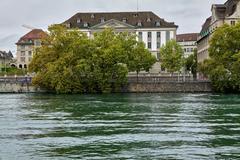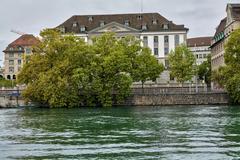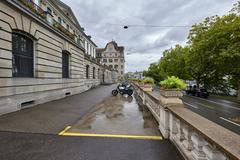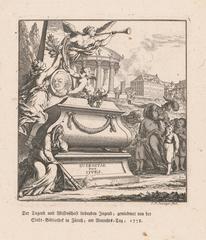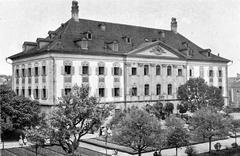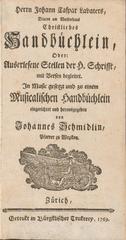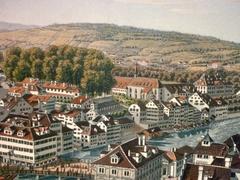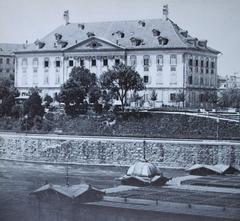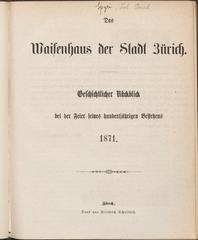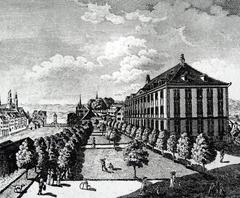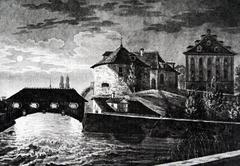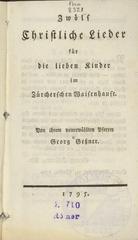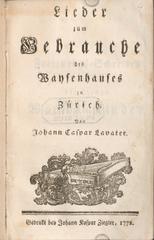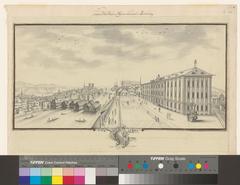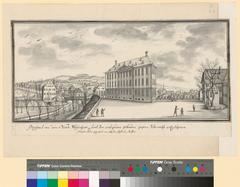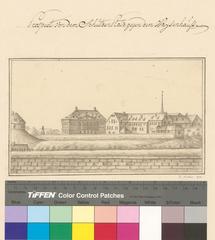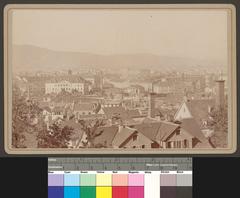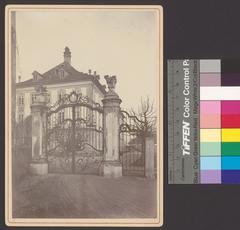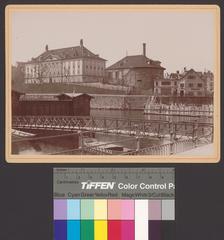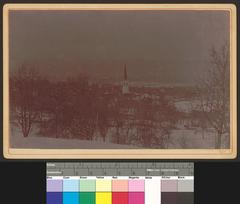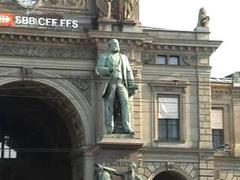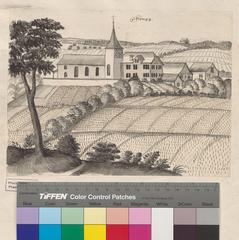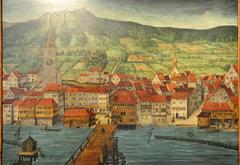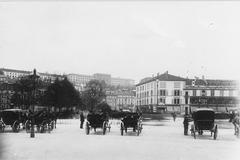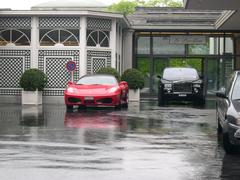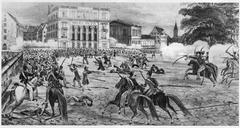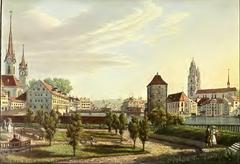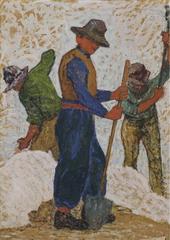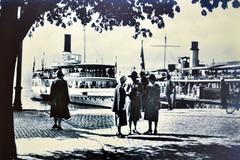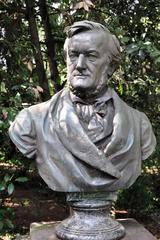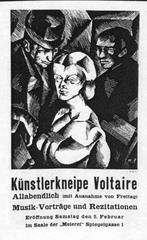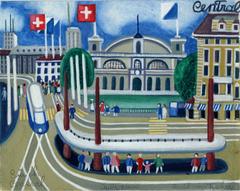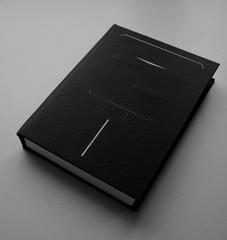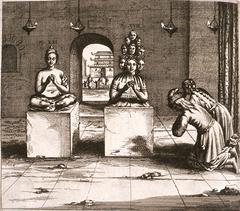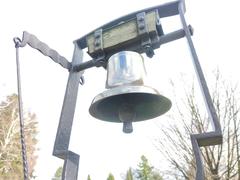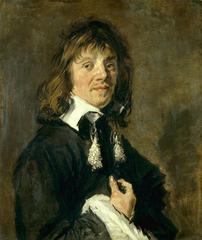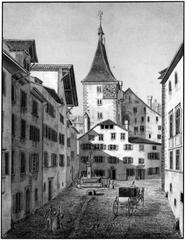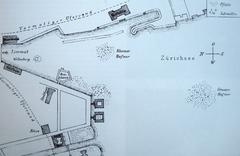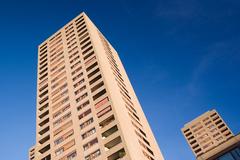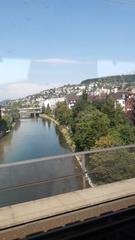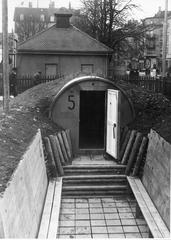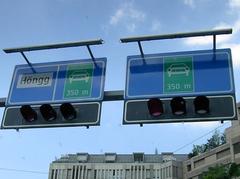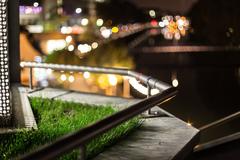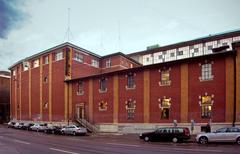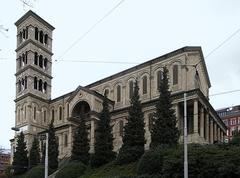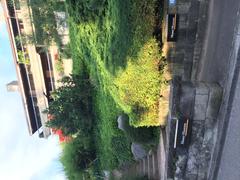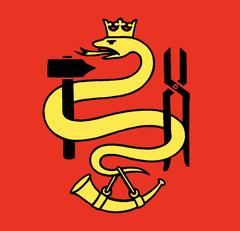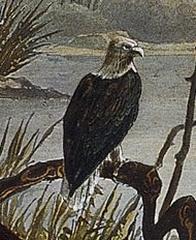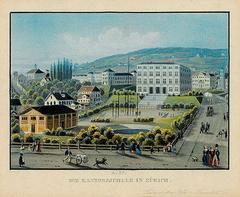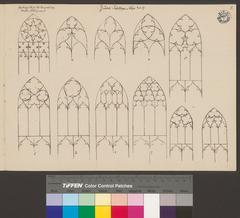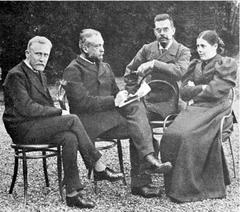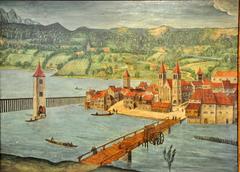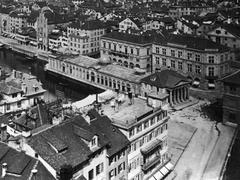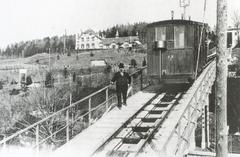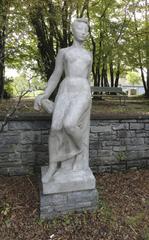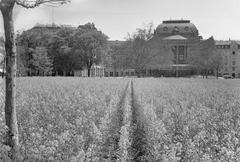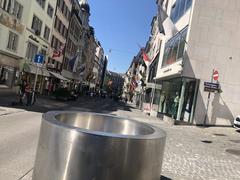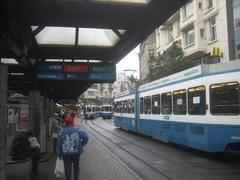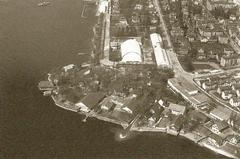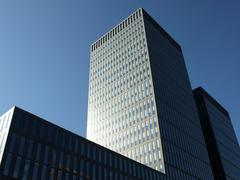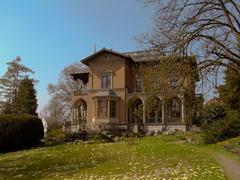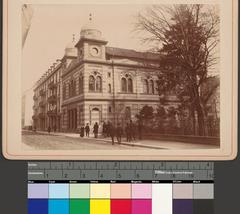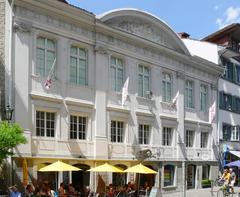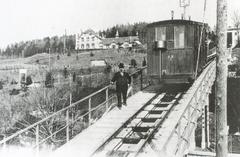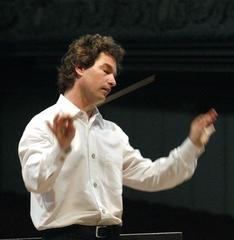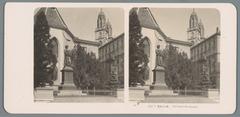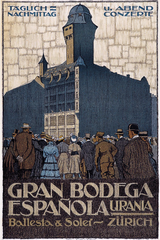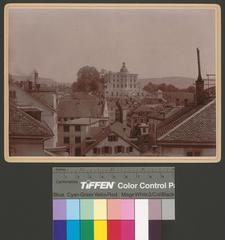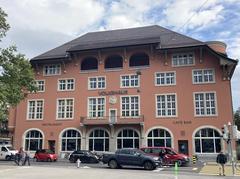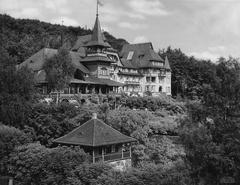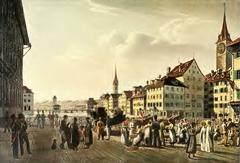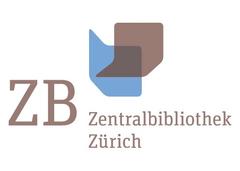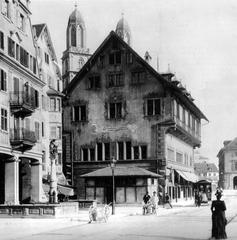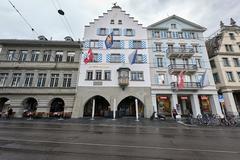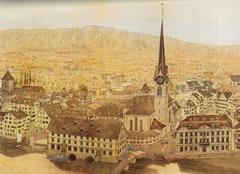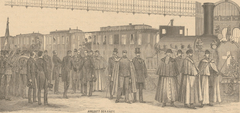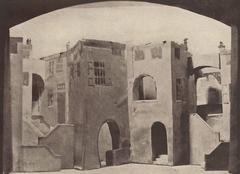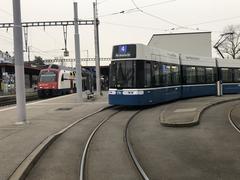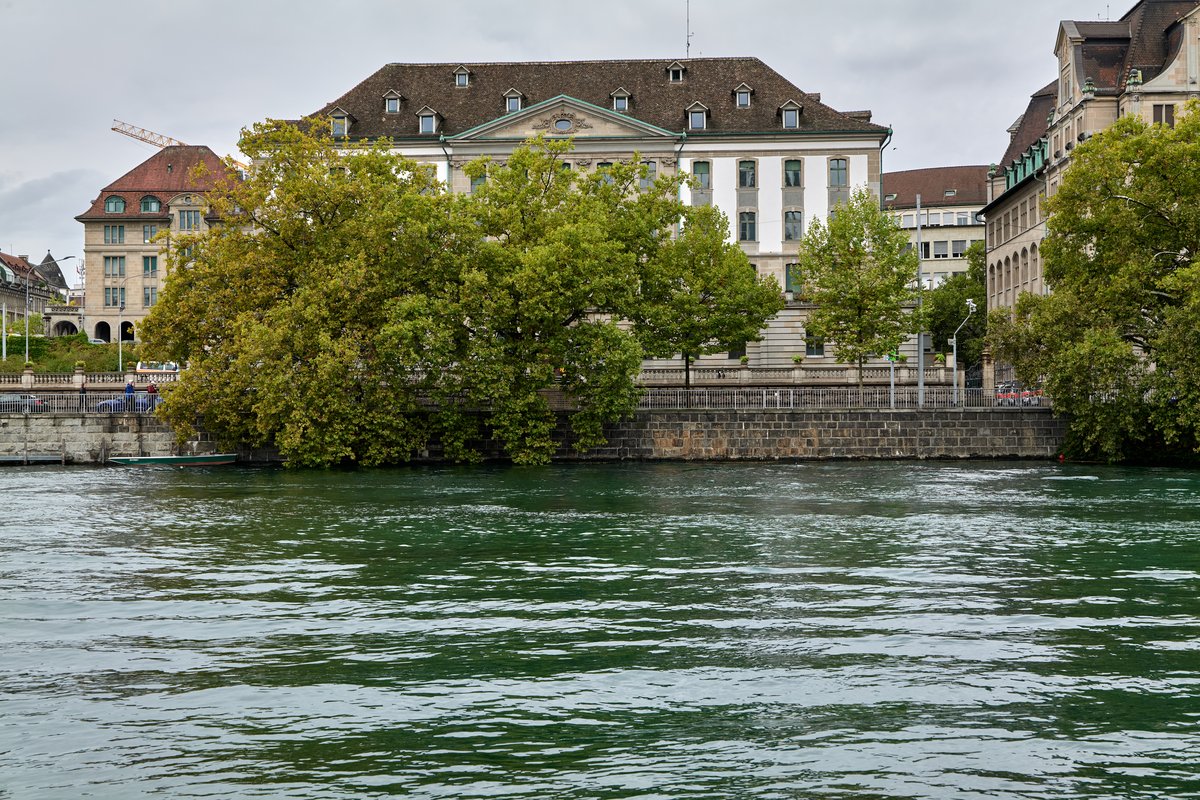
Waisenhaus Zürich Visiting Hours, Tickets, and Travel Guide
Date: 15/06/2025
Introduction
Nestled in Zürich’s historic center, the Waisenhaus Zürich stands as a powerful symbol of the city’s social welfare legacy, architectural evolution, and adaptive urban development. Established in the 17th century within the former Oetenbach nunnery, the building has transitioned from an orphanage and penitentiary to a model institution for child welfare reform, and now serves as the headquarters of the Stadtpolizei Zürich (city police department). While interior access is limited, the building’s baroque façade and presence in the cityscape make it an essential stop for anyone interested in Zürich’s layered history (Wikipedia; Antiquarische; World Cities Culture Forum).
This guide explores the Waisenhaus Zürich’s historical origins, social impact, architectural milestones, and practical information for visitors, including hours, accessibility, guided tours, and key nearby attractions.
Table of Contents
- Introduction
- Historical Origins and Institutional Development
- Social Reforms and Child Welfare Innovation
- Architectural Evolution and Urban Context
- Visiting the Waisenhaus Zürich: Practical Information
- Frequently Asked Questions (FAQ)
- Conclusion
- References
Historical Origins and Institutional Development
The Waisenhaus Zürich originated during the aftermath of the Reformation, when monastic buildings were repurposed for social welfare. In 1637, the Oetenbach nunnery’s north wing was converted into an orphanage, while the west wing became a penitentiary. This dual-purpose “Zucht- und Waisenhaus” reflected early modern European approaches to managing poverty—combining discipline with care for the vulnerable (Wikipedia; Children’s Homes).
Over the next century, the orphanage’s structure and practices evolved, emphasizing strict discipline and compulsory labor, such as weaving and spinning, as tools for moral reform and self-sufficiency (Antiquarische). In 1771, a new orphanage was constructed in the former nunnery’s garden, separating the institution from the penitentiary and marking a progressive shift in child care (Everything Explained Today).
Social Reforms and Child Welfare Innovation
The 19th century saw significant liberal reforms. The 1837 orphanage ordinance abolished compulsory child labor, replacing it with a focus on education and integration into public life (Antiquarische). Orphans gained the right to attend public schools, aligning with broader Swiss educational reforms and recognizing children’s rights to learning and development.
These measures were pioneering for their time, influencing child welfare practices in Zürich and beyond, and helping to improve opportunities for orphaned and abandoned children.
Architectural Evolution and Urban Context
The Waisenhaus has undergone several architectural transformations. After the orphans’ move in 1771, many original convent buildings were demolished. The orphanage itself was rebuilt between 1868 and 1878, with significant modifications in 1890, including the creation of the Giacometti entrance hall (Wikipedia; Everything Explained Today). In 1911, it became the headquarters of the Stadtpolizei Zürich following new municipal construction by architect Gustav Gull. The Giacometti Halle, adorned between 1923 and 1925 by artist Augusto Giacometti, is now recognized as a Swiss cultural treasure.
Today, the building at Bahnhofquai 3 is the last surviving structure of the Oetenbach nunnery, serving as a vital link to Zürich’s medieval and modern heritage (World Cities Culture Forum).
Visiting the Waisenhaus Zürich: Practical Information
Location and Accessibility
- Address: Bahnhofquai 3, Zürich (near Hauptbahnhof and Bahnhofbrücke)
- Public Transport: Easily reached by tram, bus, or on foot from Zürich Main Station
- Accessibility: The area is wheelchair accessible with ramps and accessible public transport options
Visiting Hours and Tickets
- Exterior Viewing: Open daily, dawn to dusk; no tickets required
- Interior Access: Not open for regular public tours due to its use as the city police headquarters
- Special Access: Occasional public events and guided tours (such as during Zurich Museum Night) offer limited interior access, especially to the Giacometti Halle (Zurich Museum Night)
Guided Tours and Events
- Guided walking tours by local cultural organizations and the Zürich Tourist Information Center may include the Waisenhaus exterior and nearby historical sites
- Special events, such as open houses and art exhibitions, provide rare opportunities to visit the Giacometti Halle
Nearby Attractions
- Swiss National Museum: In-depth exhibits on Swiss history and culture (Swiss National Museum)
- Lindenhof: Historic park with panoramic city views
- Grossmünster & Fraumünster: Iconic churches with significant art and architecture
- Bahnhofstrasse: Zürich’s renowned shopping street
- Altstadt (Old Town): Medieval streets and vibrant cafés (Zürich Old Town)
Photography Tips
- The best times for exterior photography are early morning and late afternoon for optimal lighting
- Interior photography is permitted only during special events with authorization
Frequently Asked Questions (FAQ)
Q1: Can I tour the inside of the Waisenhaus Zürich?
A: Interior tours are not generally available, except during special cultural events or guided tours.
Q2: Is there an entrance fee?
A: No fee is required to view the exterior; fees may apply for special tours or events.
Q3: Is the site accessible for people with disabilities?
A: Yes, the surrounding area is wheelchair accessible and public transport is adapted for mobility needs.
Q4: Are guided tours available?
A: Yes, local tour operators and the Zürich Tourist Information Center offer walking tours that may include the Waisenhaus.
Q5: Where can I find more information?
A: Visit the official Zürich tourism website or inquire at the Tourist Information Center at Zürich Main Station.
 The historic Waisenhaus Zürich at Bahnhofquai 3—an enduring symbol of social reform and adaptive reuse.
The historic Waisenhaus Zürich at Bahnhofquai 3—an enduring symbol of social reform and adaptive reuse.
Conclusion
The Waisenhaus Zürich is a unique testament to Zürich’s commitment to social progress, heritage preservation, and architectural adaptation. While public access to the interior is limited, the building’s rich history and baroque presence make it a rewarding landmark for travelers exploring Zürich’s historical and cultural fabric. Combine your visit with guided tours, special events, and nearby attractions to experience the full depth of Zürich’s legacy.
For the latest information on visiting hours, tours, and events, consult the official Zürich tourism website and keep an eye out for cultural happenings that may grant special access.
Download the Audiala app for personalized travel guides, explore more of Zürich’s heritage, and follow us on social media for updates and insider tips!
References
- Wikipedia – Waisenhaus Zürich
- Antiquarische – Verwalten und Erziehen
- Everything Explained Today – Waisenhaus Zürich
- Trek Zone – Waisenhaus Zürich
- World Cities Culture Forum – Zürich
- Zurich Museum Night – Late Night at Zurich’s Museums
- Zürich Official Tourism Website
- Swiss National Museum
- Zürich Old Town
